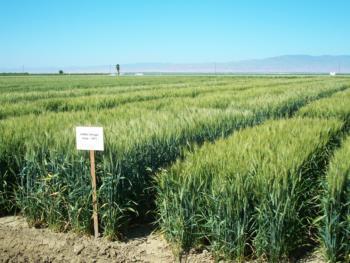
The West Side Research and Extension Center (WSREC) is the result of the determination, energy, and foresight of a group of farmers, business people, and University of California (UC) staff who believed that the highly-productive west side of the San Joaquin Valley of California needed a research field facility directed toward the production issues of this large area. Some of these individuals provided the land for WSREC in the heart of the San Joaquin Valley's "West Side" and provided significant help during its earliest development. The center was transferred to the University in May 1959, and its first research projects began in the spring of that year. From its inception through today, the WSREC strives to serve research and extension education efforts directed at the needs of semi-arid zone agricultural crop producers interested in both annual and perennial crop choices. Staff available to assist you with successful research at the WSREC consists of a Director, Center Superintendent, an Office Manager, an Administrative Assistant, a Mechanic, five Agricultural Technicians and numerous contract labor assistants that can be brought in as needed to assist in caring for plots and conducting research.

Over the years, a tremendous bounty of information of great use to the broad agricultural community in the western U.S. has come out of WSREC-based research. The location, facilities and staff resources combine to provide a high crop yield potential site to evaluate cultivars of currently-grown and new crops, and opportunities to address emerging pest and disease issues and both biological and chemical control, evaluate new practices and technology to improve efficiencies in water, salinity and nutrient management, and field-test alternative reduced tillage practices with potential to improve soil quality and resource use efficiencies. Being in a semi-arid region with an annual rainfall averaging less than 6 inches, there is a long history of irrigation, salinity and water management research and management recommendations developed here for a broad cross section of crops. There are two large weighing lysimeters at the facility that are a part of long-term USDA-ARS/UC cooperative work on crop water use measurements. One of the first CIMIS (California Irrigation Management Information System) weather stations to be put into use is still located at the WSREC, and this was a primary site for some of the field research that went into design and interpretation of this weather station network used for irrigation management decisions. The Center is used by UCCE staff for educational activities and meetings, and also serves some UCCE staff needs for space to serve grower analytical needs. For over a decade, many of the field research projects on conservation tillage/alternative tillage practices and irrigation/tillage interactions research have been located at the WSREC.




